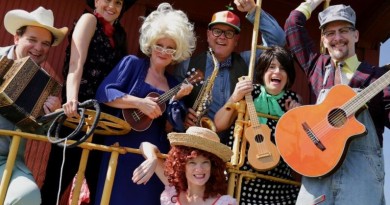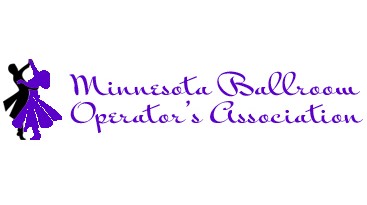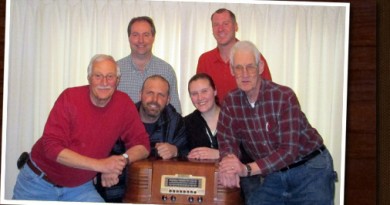Litomysl Summer Festival was like a family reunion set to polka music
When the Litomysl-aneous Polka Group gathered in the sanctuary of Holy Trinity Catholic Church in Litomysl, MN (south of Owatonna) in rural Steele County Sunday morning, July 30 to help lead the worship, it was part liturgy, part family reunion, and, of course, part polka.
“Only three of us are not related,” said Galen Spinler, one of the founders of the group, who also plays the piano and arranges some of the music.
And exactly how many are in the group?
“That depends on who shows up,” Spinler replies.
Usually, it’s about 15 people who sing or play instruments – piano, tuba and trumpet, assorted woodwinds, drums and the accordion, of course. But on that Sunday morning – the morning of the Litomysl summer festival – 18 showed up and crowded into a corner at the front of the sanctuary. More than usual.
That seemed to be the pattern of the day. So packed was the sanctuary, including the balcony, Sunday morning that folding chairs had to be brought out and set up in whatever space was available. And even then, some stood throughout the service. There were more people there than are typically there even on Christmas – a holy day of obligation in the Catholic Church.
Of course, part of the attraction was the polka Mass itself – a liturgy that substitutes some of the traditional music with polka music and a liturgy that has become a tradition at the annual summer festival.
For 46 years, the Litomysl community has celebrated the summer festival, and for 25 of those years the Litomysl-aneous polka group has provided the music for the Mass in the spacious sanctuary.
“It started back in the early ‘90s,” said Spinler
He recalled hearing of a priest in northern Minnesota – Father Frank Perkovich, sometimes dubbed the “Polka Padre” – who introduced polka music to the liturgy and to his parishioners up north.
Spinler, who was serving as music minister at Holy Trinity, was approached by the priest there about doing a polka Mass for the festival. Spinler agreed, grabbing his cousin Deb Rvsavy Lien to help and using the music they grew up with in the church they grew up in. So, they took polkas and waltzes and old-time weddings to see what they could create.
“We took the Czech folk tunes that we grew up with, that our parents and grandparents played, and retrofitted them with liturgical words,” Spinler said.
Rysavy Lien agreed.
“It’s based on old-time Czech music,” said Rysavy Lien, who conducts Litomysl-aneous.
Sometimes it means adapting the lyrics so the meter fits the music. Sometimes it means major rearrangement of the music, she said.
“We work on it ‘til it fits,” said Rysavy-Lien.
In the 25 years that Litomysl-aneous has played at the summer festival’s polka Mass, they have worked on, adding some music, subtracting some, Spinler said, just as they have added some members, lost others. Indeed, some of the younger members of the group weren’t even born 25 years ago when the group first started playing at the Polka Mass.
The music had an impact.
As the musicians, the singers sang and the congregation joined in, there were smiles across many faces. Some tapped their toes. Others swayed, as if in any moment there would break out in dance – a polka perhaps, or maybe a waltz.
But the festival was about more than the polka music or about the brats served for lunch, and it was about more than the 350 dozen buchty that were made and sold. It was about reunion and heritage and remembering from whence they came.
A strong foundation
In the stones of the Holy Trinity Catholic Church of Litomysl are the sweat and the toil of those who built it – quite literally, it seems.
In the moments before the polka Mass was to begin, Rysavy Lien paused to recall the story of how the Holy Trinity Church building came to be.
The church was established in 1887, she said, with the congregation of Czech immigrants meeting and worshiping in a small wooden structure. But as the years past and the congregation grew, it soon was outgrowing that building.
At that time – about 1940, Rysavy Lien said – the priest of the parish had a dream about the farmers in the congregation – and most of them were farmers – playing a significant role in the building of a new church. As they were removing the stones from the fields so they could plow, they would bring those stones from their fields to Litomysl and the site of the church, each farmer bringing six wagon loads full of rocks. Those rocks would then be used to build the church.
And the farmers did bring the stones. And the stones were used to build the church that stands to this day.
“A good percentage of the work was done by local people,” said Rysavy Lien.
Because of that, the people in the Holy Trinity parish feel a special kinship to the church. And “kinship” is the right word. Like the close relationship of those in Litomysl-aneous, many, if not most, of the families in the parish are related. And though it drew hundreds of visitors with no direct connection to the church, Sunday’s festival also became a place for family members to reunite, many with distant cousins, some from distant lands.
Wayne Starman of Owatonna grew up just four miles south of Holy Trinity. So it was not unusual that he came back to the church he had grown up in.
“If you want to see somebody you haven’t seen since last year, this is the place to come,” he said. Then he motioned toward the band that was playing. “Dancing on the grass is difficult, but my wife will get me out there.”
No, it wasn’t unusual for Wayne Starman to be there. It was like coming home. What was unusual was that the festival was attended by many of Starman’s cousins, including some distant cousins – distant in terms of relationship and distant in terms of geography.
There was Stanislav Starman, the executive director of Starmans Electronics based in Prague in the Czech Republic. His presence at the festival and even at the Starman family reunion July 29 in the parish center of Sacred Heart Catholic Church in Owatonna came as a surprise to the rest of the Starman family. To hear them tell it – and they have to tell it since Stanislav Starman’s English is broken at best – they did not know that their Czech cousin was going to come to the reunion until an hour before it began. In fact, they didn’t even know he was here in the country.
Several of Starman family used the festival to continue the family reunion from the day before. That included Frank Starman, one of Wayne’s distant cousins who grew up in what was then communist Czechoslovakia. Frank Starman’s family managed to escape in the early 1980s, before the communist regimes of Eastern Europe began to collapse.
Once they arrived in this country, settling first in Idaho before moving to New Jersey, they began to look for relatives. They had heard that one branch of the Starman family tree had come to America sometime in the 19th century. Some had settled in the Dakotas and some in Minnesota.
“We met and we realized we were from the same root,” said Frank Starman.
The root included Wayne Starman.
Some of the Starman family still lives in the Czech Republic on the same family farm on which the family has lived for more than 300 years. It’s outside the town of Lhotka, a very small village of 50 to 100 people. The village of Lhotka sits a scant 12 miles from a city of 10,000 people, a city whose history dates back more than 10,000 years, the Czech city of Litomysl.




